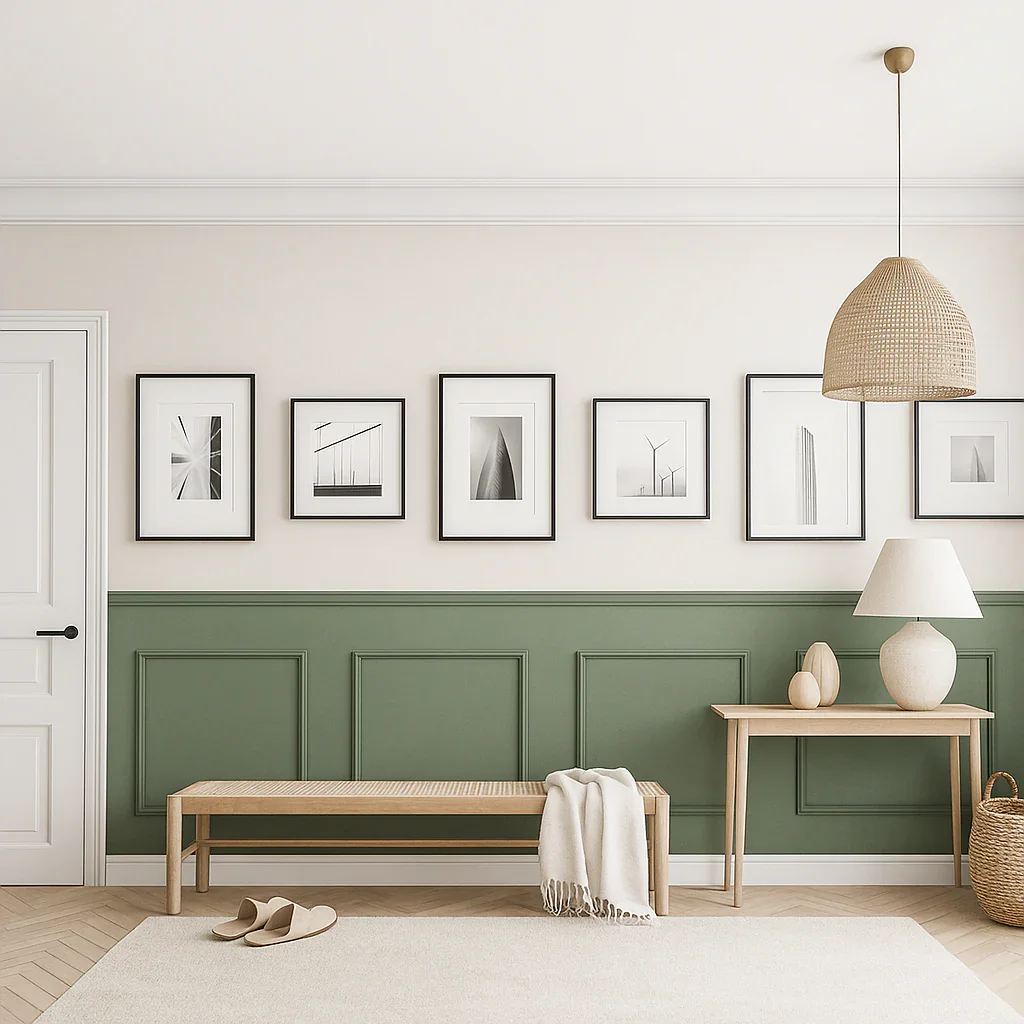A Simple Guide to Wall Paneling Styles
(Beadboard, Board and Batten, Shiplap, and More)
If you’ve ever looked around your home and thought, “These walls could use a little more character,” wall paneling might be exactly what you need. It’s one of the easiest ways to add texture, warmth, and visual interest to a room—without tearing anything down or doing a full remodel.
There are a few main types of wall paneling that homeowners ask me about most often: beadboard, board and batten, shiplap, slat wall, wainscoting, and tongue and groove. Each one has a different look, cost, and level of difficulty to install. Here’s a breakdown to help you figure out which one fits your home best.
Beadboard
Look & Feel:
Beadboard has narrow vertical lines (“beads”) every couple of inches, giving it a clean, classic pattern. It’s a favorite for farmhouse, cottage, and traditional-style homes.
Where It Works:
Bathrooms, mudrooms, and entryways. It’s often used halfway up the wall (as wainscoting) and topped with a simple trim piece.
Cost & Complexity:
Beadboard comes in pre-cut panels that make it fairly quick and affordable to install. It’s one of the least expensive options.
What It Adds:
Beadboard instantly brightens a space and adds charm without feeling fussy. It’s great for small rooms or anywhere you want a touch of coziness.
Board and Batten
Look & Feel:
Board and batten is made up of wide, flat boards with thin strips (called battens) covering the seams. The result is a structured, geometric look that adds visual height to a room.
Where It Works:
Bedrooms, dining rooms, hallways, and entryways.
Cost & Complexity:
Moderate. It takes a bit of measuring and planning to get the spacing right, but materials are usually affordable, and it can be customized for any wall height.
What It Adds:
Board and batten gives a timeless, tailored feel. It looks especially nice in craftsman-style or modern homes that need a little extra architectural detail.
Shiplap
Look & Feel:
Shiplap features horizontal boards that overlap slightly, creating a subtle groove between each plank. Depending on the color and finish, it can feel rustic or clean and modern.
Where It Works:
Living rooms, bedrooms, and accent walls. It also looks great on ceilings.
Cost & Complexity:
Moderate. Materials can range from budget-friendly pine boards to higher-end hardwoods. Installation takes careful leveling to keep everything even.
What It Adds:
Shiplap gives a room a cozy, farmhouse-style look with texture and charm. Painted white, it feels coastal; stained wood versions bring warmth and character.
Slat Wall (Fluted Paneling)
Look & Feel:
This modern style uses evenly spaced vertical slats, either painted or natural wood. It’s bold and textured, perfect for making a statement.
Where It Works:
Living rooms, offices, and accent walls—especially behind TVs or beds.
Cost & Complexity:
This is one of the higher-end options. Each slat needs to be cut and spaced carefully, so installation takes more time and precision.
What It Adds:
Slat walls look upscale and contemporary. They create depth and shadow that change throughout the day with the light, adding a subtle sense of movement to a room.
Wainscoting
Look & Feel:
Wainscoting isn’t one specific paneling style—it’s a term for paneling that covers the lower part of a wall (usually about one-third up). It can be done in beadboard, board and batten, or even raised paneling.
Where It Works:
Dining rooms, hallways, and bathrooms.
Cost & Complexity:
Moderate. The cost depends on the style you choose and how detailed you want the trim work to be.
What It Adds:
Wainscoting gives any room a more polished, traditional feel. It’s also practical—it protects your walls from scuffs, furniture, and little-kid fingerprints.
Tongue and Groove
Look & Feel:
Each board has a “tongue” on one side and a “groove” on the other, allowing them to fit snugly together. It looks similar to shiplap but with tighter seams.
Where It Works:
Bedrooms, ceilings, cabins, or anywhere you want a rustic yet finished look.
Cost & Complexity:
Mid-range. It takes a bit longer to install because each board locks individually, but the result is very sturdy and durable.
What It Adds:
Tongue and groove feels warm and handmade—perfect for cozy spaces or rooms that need texture and depth.
Choosing What’s Right for You
If you’re drawn to simple charm, beadboard or board and batten are great places to start.
If you want something eye-catching or modern, slat wall or tongue and groove might be worth the investment.
And if you just want a little texture or contrast, shiplap or wainscoting can go a long way toward making your space feel “finished.”
No matter the style, wall paneling can completely change the mood of a room.
A Final Word
Wall paneling is one of those projects that adds a lot of personality for the cost. Whether you want a cozy cottage look or something sleek and modern, the right paneling can make your walls feel like part of the design instead of just the backdrop.
If you’re in Utah County and thinking about adding paneling to your home, I can help you choose the right style, materials, and layout for your space—and make sure it’s installed cleanly and securely.






